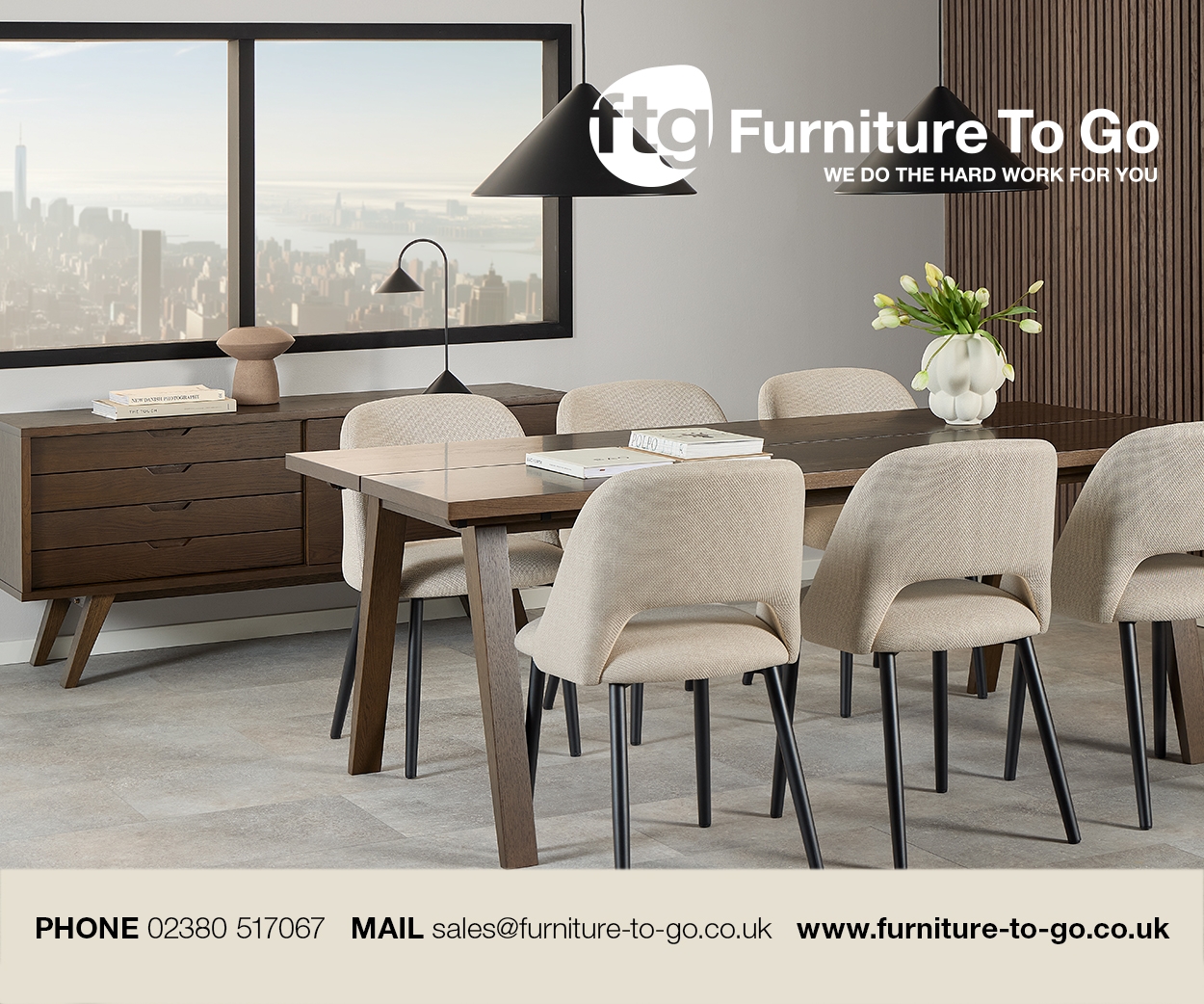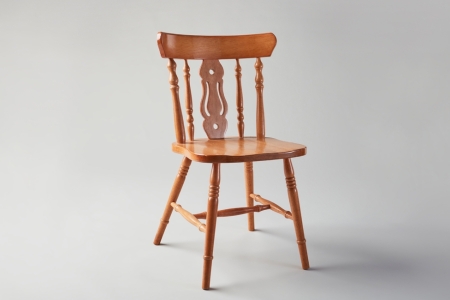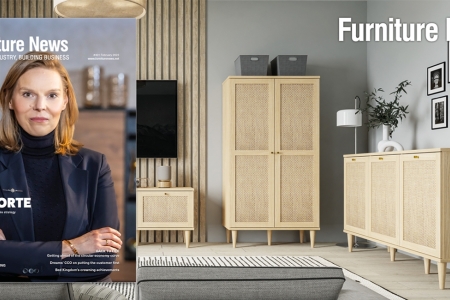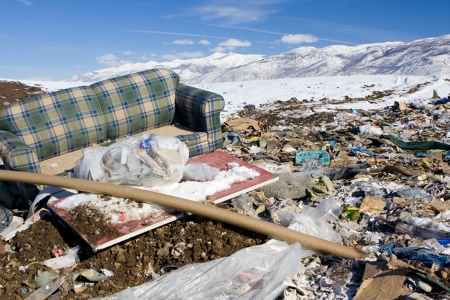Would you buy used furniture for your home? With many consumers struggling to justify big-ticket expenditure, plus mounting demand for greener products and processes, the furniture reuse movement is fast gaining traction, with businesses such as IKEA and eBay leading the charge towards giving products a ‘second life’ in an increasingly circular economy. Here, Furniture News explores some of the drivers and exponents of this trend, and its possible implications for the traditional supply chain …
Driven by a raft of social and economic drivers, the UK furniture resale market is on the rise. GlobalData believes it will grow by +40.8% between 2022 and 2027, to a value of £1101m – a rate that far outpaces the total market, as consumers increasingly find this shopping choice acceptable and accessible.
“The furniture resale market is ramping up, with an increasing number of players becoming active within the market such as Rehome and Vinterior, alongside furniture market leaders such as IKEA adding resale options to their offer,” notes GlobalData retail analyst, Sophie Mitchell. “These players are stimulating the resale market, as they are more able to meet changing consumer expectations and demand than traditional antique and charity shops.”
There has always been (and always will be) a market for used furniture. Generational hand-me-downs, and resold vintage cabinet furniture, for example, was once the norm.
But there has always been uncertainty around which goods consumers deem desirable and acceptable. The notion of sleeping on a used mattress, for example, remains out of the question for many, despite their budgetary constraints and increased awareness of the planet’s mounting waste surplus.
Yet times, and attitudes, are changing. Younger demographics are driving growth within this market, reports GlobalData, with the highest purchase penetration being among 24-34-year-olds.
“These younger consumers are not only generally more concerned about the environmental impacts of new products, but are also facing a challenging housing market,” Sophie explains. “The resale market is therefore crucial for kitting out homes, as consumers will be on tighter budgets if they do manage to buy – and this is especially the case for first-time buyers.”
She adds that the improved communication of the qualities and specifications of used products is also helping make them more palatable to consumers.
Championing preowned
In August, IKEA began trials of digital secondhand marketplace IKEA Preowned in Madrid and Oslo, connecting customers looking to buy and sell used IKEA products.
“The test will go on until December and during this time, we will be continuously interacting with users to understand customers’ behaviours and interests towards a digital secondhand marketplace, as well as what it would mean for us from a business perspective,” says Jesper Brodin, Ingka Group’s CEO. “After December we will evaluate and decide on the next steps.”
The pilot platform is free of charge, and lets users receive recommended prices, professional photos, and precise measurements. So far, most listed products are within segments such as living room, children, and storage, says IKEA, whose strategy already offers a buy-back programme, parts replacement, and investment in recycling initiatives such as RetourMatras, which recycles mattresses into materials for new mattresses.
“The global secondhand furniture market is growing rapidly, with a projected annual growth rate of +6.4% in 2024,” Jesper continues. “Already today, 10% of the secondhand home furnishing market is made up by IKEA products. With this platform we see possibilities to simplify and enhance experience for both sellers and buyers.”
Full circle
Last year, IKEA joined UK retailers including Very, Sainsbury’s, Dunelm and the British Heart Foundation (BHF) to form the Circular Change Council, a collective created by eBay UK and climate action NGO WRAP, that aims to increase circularity in the furniture industry and help reduce furniture waste.
WRAP’s research showed that 20% of home furniture that is discarded is suitable for reuse, and buying used could save households £2.37b, while avoiding 62,255 tonnes of carbon emissions (the equivalent of taking over 28,000 cars off the road for a year).
Having seen searches for secondhand furniture grow by over +140% YoY (the top items being used kitchens, wardrobes, chests of drawers and armchairs), eBay too was keen to promote re-commerce and tackle waste, said its (then) GM of Home, Refurbished and Electronics, Kumaran Adithyan: “There is a huge opportunity for the furniture industry to take on some of the challenges to help take steps towards a fully circular future.
“There are some challenges we’ll work together [with WRAP] to tackle – from stigma for buying secondhand, to the language and framing that we use around non-new items. For 28 years, eBay has been providing the platform for non-new items and driving circularity. Now is the moment for secondhand to shine.”
With a mission to reduce waste, influence customer behaviour and ensure commercial viability for the retailers and furniture businesses involved, the Circular Change Council is planning to launch pilot projects to kickstart these changes.
WRAP CEO Harriet Lamb states: “From sofas to mattresses, tables to garden chairs, furniture waste is mounting. It’s high time that we addressed the impact on the environment, as well as looking at how we can all as citizens create positive change whilst saving money, such as encouraging people to buy pre-loved furniture as they do with clothes.”
Regarding reuse
Alongside the secondhand movement exists a growing industry dedicated to reuse of a different kind.
The term ‘reuse’ is problematic, meaning both to use a product again in its original form, as well as breaking it down into its constituent parts, and rebuilding all or part of those into a new form. Consumers may be resistant to the notion of buying a secondhand mattress, but are likely to be more receptive to the idea of purchasing one made up of reconstituted foam, springs and fabrics, and innovative operators are finding plenty of ways to not only extend a product’s lifespan, but to give it a new life.
Such developments are seen as a crucial step, given the issues surrounding the disposal of such bulky items. Given the generous try-before-you-buy pledges offered by the leading bed-in-a-box brands, it is unsurprising that this industry in particular has generated a relatively high number of returns, necessitating robust resale and recycling programmes.
Emma’s Second Life programme offers consumers the chance to buy a used mattress that has undergone a “meticulous cleaning and sanitisation process”, while Simba offers a wide range of refurbished products via its online outlet – and there are plenty more examples of progressive operators to be found in the Register of Approved Mattress Recyclers (RAMR), such as Bye Bye Bed and The Furniture Recycling Group.
Here to stay
Whether through reselling, reuse, repurposing or recycling, the furniture resale market is finding its place as a necessary, and long overdue, part of the circular economy.
GlobalData reports that more than one in four (26.5%) consumers would considering purchasing furniture via resale, while Furniture News’ own research, conducted this year with the support of 3D furniture product visualisation platform Chaos Cylindo, found that 15% of consumers planned to make their next purchase a used one, either from a charity shop or online/social marketplace – and fresh approaches to manufacturing and distribution will only make them happier to do so.
But what might this movement mean for the furniture industry as a whole? Will a growing secondhand market impact sales of new products and threaten existing business models, or could it offer the traditional supply chain fresh opportunities?
We asked some of our regular contributors, as well as specialists in the field of repurposing and reuse, for their opinions …
Find out what the industry had to say in October's issue.
Pictured: IKEA is trialling a digital secondhand marketplace












